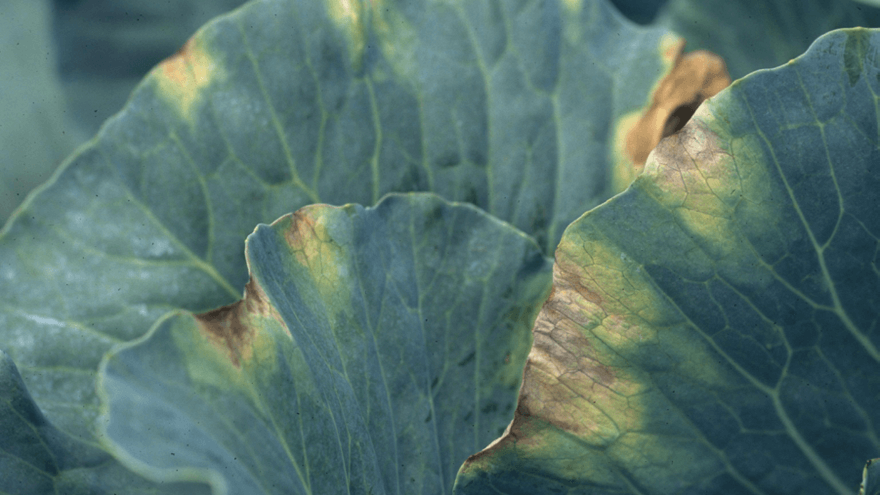
Winter pressure of bacterial diseases
In many regions around New Zealand, lettuces, brassicas and other leafy greens can be grown year-round. While insect and fungal disease pressures are often less in winter, bacterial diseases can still create significant issues for growers.
Xanthomonas species are often associated with leaf spotting or leaf blight diseases which exhibit dark brown or black lesions. Leaf spot and blight bacteria are commonly spread by rain splash or irrigation. Xanthomonas campestris causes black rot in brassicas resulting in infected V-shaped lesions in brassica leaves. Splitting a leaf may reveal the black infection in leaf veins.
Pseudomonas species are also responsible for leaf spotting symptoms in crops such as lettuce and peppery spot and head rot symptoms in brassicas. These lesions tend to be more light brown or tan in colour.
Pectobacterium carotovorum infects lettuce, onions, brassica and carrots causing soft rot in all of these crops. Symptoms include wilting of plant material and watery-soaked lesions often resulting in a foul smelling, slimy mess.
Bacterial diseases are difficult to control with the current best practice to maintain protective copper sprays through the growing season. Other recommendations are to use clean, certified seed to reduce seedborne disease spread and avoid working in the crop during wet conditions to reduce possible spread of bacterial spores through the crop. Crop rotation can also help reduce disease pressure. Peppery spot in brassicas, for example, is relatively short-lived in soil meaning a rotation of three years can be effective.
For more information on controlling bacterial diseases, please contact your Fruitfed Supplies Technical Horticultural Representative.



